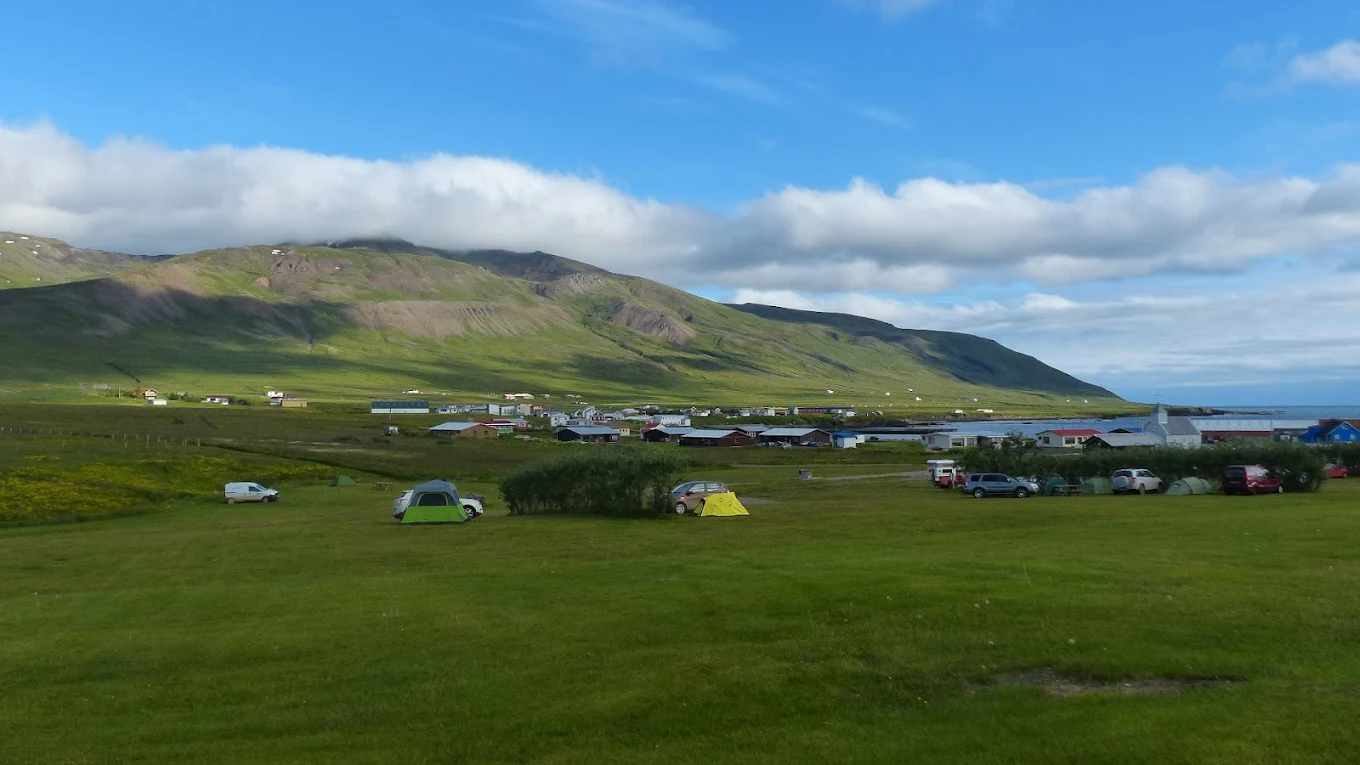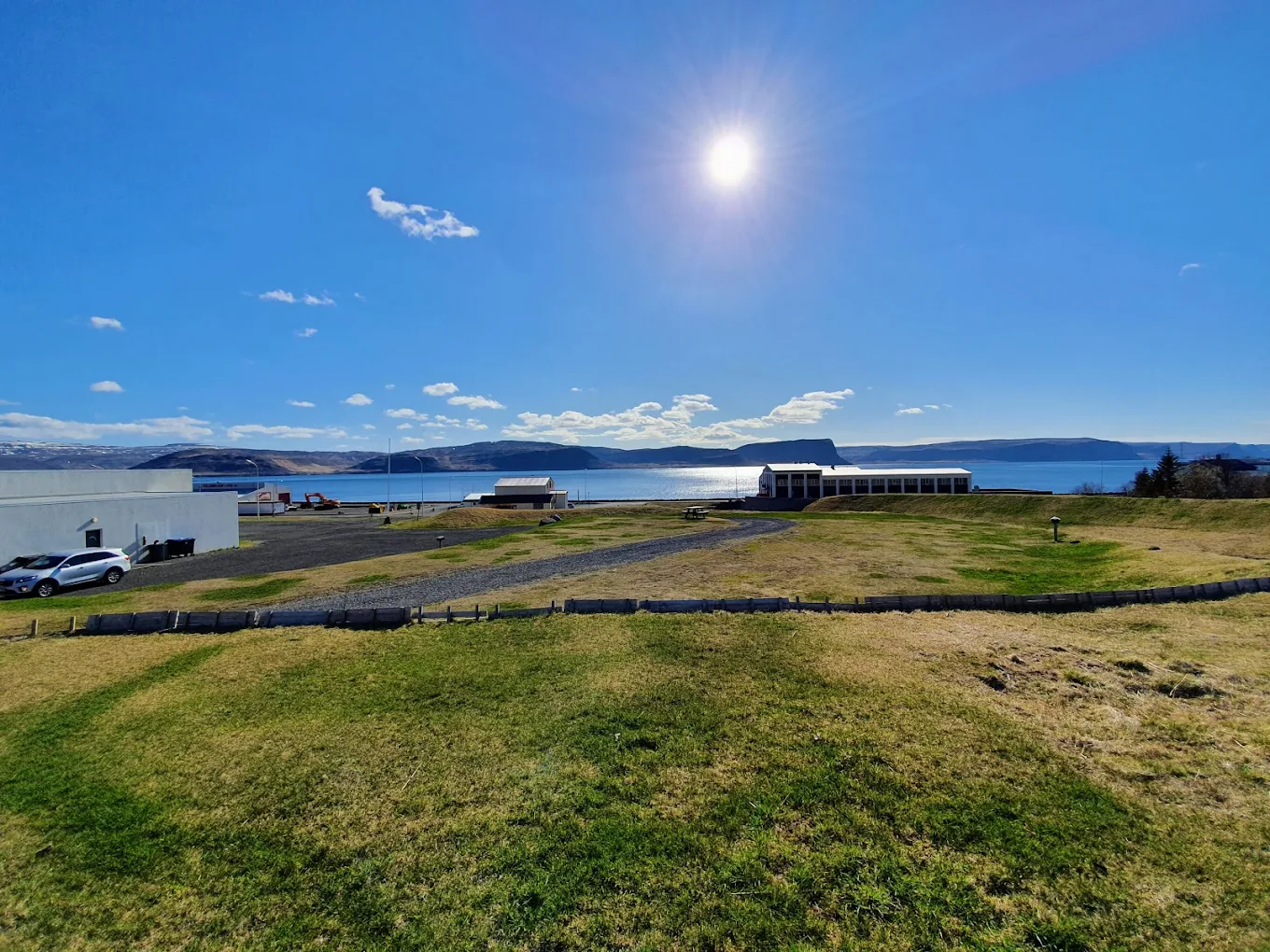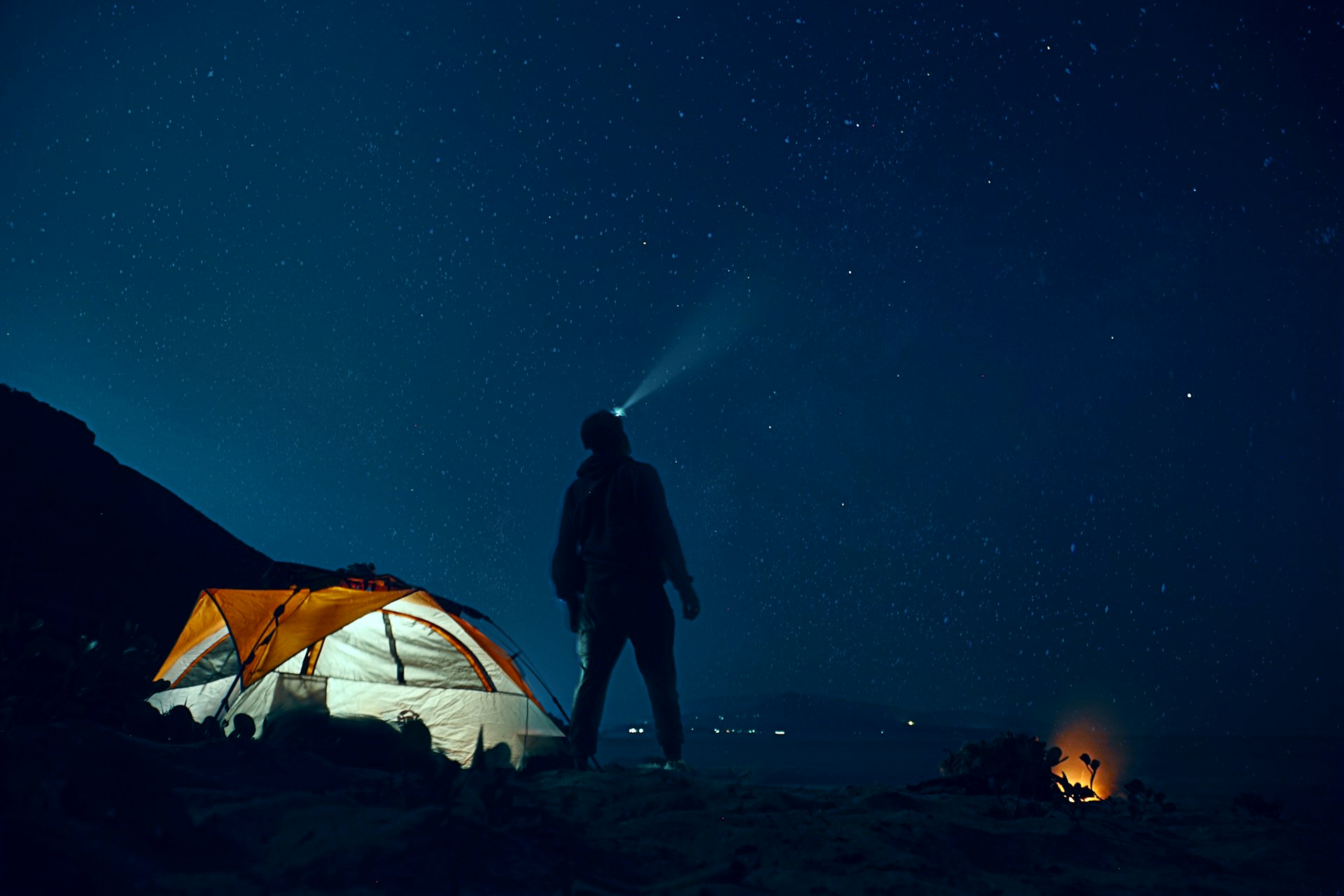Ultimate 7-Day Iceland Campervan Itinerary
Plan the ultimate 7-day Iceland campervan itinerary with top attractions, scenic drives, campsites, and travel tips for an unforgettable road trip.
Iceland's dramatic landscapes, from thundering waterfalls to otherworldly glaciers, make it one of Europe's most spectacular camping destinations. With over 200 official campsites scattered across this Nordic island, outdoor enthusiasts can experience the raw beauty of the Land of Fire and Ice while sleeping under the midnight sun or the dancing Northern Lights.
Whether you're planning a budget-friendly road trip around the Ring Road or seeking remote wilderness experiences, camping in Iceland offers unparalleled access to some of the planet's most stunning natural wonders.
Camping in Iceland provides numerous advantages that hotels simply cannot match. The freedom to wake up beside iconic landmarks like Jökulsárlón Glacier Lagoon or Geysir geothermal area creates memories that last a lifetime. Budget-conscious travelers particularly appreciate the significant cost savings, as camping fees typically range from 1,500-3,000 ISK ($11-22 USD) per person per night, compared to hotel rates that can exceed $200 per night.
The flexibility of camping allows you to follow Iceland's unpredictable weather patterns and chase the Northern Lights without being tied to fixed accommodation bookings. Many of Iceland's most photogenic locations are accessible only through camping, as they're located far from traditional lodging options.
Iceland's notoriously unpredictable weather demands specialized camping equipment that can handle everything from summer snow to powerful winds. Your tent must be rated for four-season use with excellent wind resistance, as gusts regularly exceed 80 km/h (50 mph) even in summer. Look for tents with reinforced guy-lines and the ability to withstand heavy rain.
A sleeping bag rated for temperatures at least 10°C (18°F) below the expected nighttime lows is crucial, as Icelandic nights can drop unexpectedly. Even in July, temperatures can fall below 5°C (41°F) in highland areas. Pair this with a high-quality insulating sleeping pad that provides both warmth and comfort on rocky terrain.
Waterproof clothing systems are non-negotiable in Iceland's maritime climate. Pack base layers made from merino wool or synthetic materials, insulating mid-layers, and a robust waterproof shell jacket and pants. Quick-dry hiking pants and waterproof hiking boots with good ankle support will keep you comfortable during long exploration days.
Don't forget practical items like a reliable headlamp with extra batteries, a portable camping stove suitable for windy conditions, waterproof bags for electronics, and a first aid kit tailored for outdoor adventures.

The Ring Road (Route 1) circles Iceland's perimeter, connecting the country's most spectacular camping locations. Each region offers distinct landscapes and experiences that showcase Iceland's geological diversity.
The capital region provides excellent camping options for those arriving by air or seeking urban amenities alongside outdoor experiences. Located in Reykjavik's Laugardalur valley, one prominent campsite offers hot showers, cooking facilities, and easy access to the city's geothermal swimming pools. The site accommodates both tents and RVs while providing essential services like laundry and a small camp store.
Just 45 minutes from Reykjavik, the town of Hveragerði features a geothermally-heated campsite where you can literally cook eggs in natural hot springs within walking distance. This unique location serves as a perfect introduction to Iceland's geothermal wonders while maintaining proximity to Reykjavik's restaurants and cultural attractions.
Best Campsites Near Reykjavik
Iceland's south coast hosts some of the country's most photographed natural landmarks alongside exceptional camping facilities. Near the village of Vík, camping options provide front-row seats to the dramatic Reynisfjara black sand beach with its iconic basalt columns and powerful Atlantic waves.
The area around Skaftafell National Park offers multiple camping zones within walking distance of Vatnajökull, Europe's largest glacier. These sites serve as base camps for glacier hiking, ice climbing, and exploring crystal blue ice caves. The park's camping areas feature wind-protected spaces and restroom facilities, though advance booking is strongly recommended during peak season.
Further east, camping near Jökulsárlón Glacier Lagoon allows for midnight photography sessions of floating icebergs without the constraints of hotel check-in times. The nearby Diamond Beach, where glacier chunks wash ashore like scattered jewels, becomes your private playground during early morning hours.
Best South Coast Campsites for Glacier and Waterfall Access
.webp)
The Westfjords peninsula offers Iceland's most remote and dramatic camping experiences, with towering cliffs, pristine beaches, and virtually no crowds. The region's camping facilities are more basic but provide access to landscapes that few tourists ever witness.
Camping near Ísafjörður allows exploration of the dramatic Hornstrandir Nature Reserve, where Arctic foxes roam freely and bird cliffs teem with puffins during the summer months. The region's camping areas often feature spectacular views of deep fjords carved by ancient glaciers.
The famous Dynjandi waterfall area provides camping opportunities beside one of Iceland's most impressive cascades. This multi-tiered waterfall creates a natural amphitheater where the sound of rushing water provides a constant natural soundtrack.
Best Campsites in Westfjords
Northern Iceland combines powerful waterfalls, geothermal activity, and excellent whale watching opportunities with well-maintained camping facilities. The area around Akureyri, Iceland's northern capital, offers multiple camping options with full amenities and easy access to botanical gardens, museums, and restaurants.
Lake Mývatn region camping provides access to an otherworldly landscape of pseudo-craters, geothermal vents, and the famous Mývatn Nature Baths. The area's camping facilities cater to geology enthusiasts and photographers seeking to capture Iceland's volcanic activity.
Húsavík, renowned as Europe's whale watching capital, features camping areas where you can fall asleep to whale songs during the summer months when humpback and blue whales frequent the nearby waters.
Best Camsites in North Iceland

Iceland's wild camping regulations require careful attention to preserve the country's fragile environment while respecting private property rights. Wild camping is legally permitted on public land that is not cultivated or privately owned, but several important restrictions apply.
Camping is strictly prohibited within national parks, nature reserves, and protected areas without using designated campsites. This includes popular locations like Þingvellir National Park, Geysir geothermal area, and most waterfall locations. Violations can result in substantial fines and contribute to environmental damage.
On private land, written permission from landowners is mandatory before setting up camp. Many farmers allow camping for a small fee, and this arrangement often provides access to facilities like bathrooms and fresh water. Always leave no trace and respect any specific instructions from landowners.
In highland areas above 700 meters elevation, wild camping regulations are more relaxed, but weather conditions become significantly more challenging and dangerous. These areas require extensive preparation and should only be attempted by experienced campers with appropriate gear.
Iceland's interior highlands offer some of the world's most spectacular and challenging camping experiences, but they demand respect and proper preparation. These regions are accessible only during summer months (typically July through September) and require 4WD vehicles to navigate unbridged rivers and rough terrain.
The Landmannalaugar region features camping beside natural hot springs surrounded by rhyolite mountains painted in brilliant colors. The area serves as the starting point for the famous Laugavegur trek, considered one of the world's most beautiful hiking routes. Camping here requires advance reservations and adherence to strict environmental guidelines.
Þórsmörk valley provides camping opportunities in a green oasis surrounded by glaciers and volcanic peaks. The valley's unique microclimate supports birch forests and diverse wildlife despite its location between three glaciers. Multiple river crossings required to reach the area make it accessible only to well-prepared adventurers.
.webp)
Camping in Iceland can be remarkably affordable with proper planning and money-saving strategies. Purchasing groceries from discount chains like Bónus and Nettó reduces food costs significantly compared to restaurants, where meals often exceed $25-30 per person.
Cooking your own meals using a portable camping stove saves substantial money while allowing you to enjoy hot food regardless of weather conditions. Stock up on non-perishable items like pasta, rice, and canned goods, supplemented by fresh ingredients purchased regularly in larger towns.
The Camping Card Iceland provides excellent value for extended stays, offering unlimited access to 42 participating campsites for a flat fee. The card costs approximately $179 for two adults and includes children under 16, making it economical for stays longer than 12 nights.
Iceland's rapidly changing weather conditions and geological activity require constant safety awareness during camping adventures. Always check weather forecasts before departing, and be prepared for conditions to change dramatically within hours. The Icelandic Met Office provides detailed forecasts and safety warnings that should be monitored daily.
River crossings pose significant risks, especially during spring snowmelt and heavy rain periods. Never attempt to cross swollen rivers, and always test water depth before committing to a crossing. Many highland routes become impassable due to high water levels.
Hypothermia remains a year-round risk due to wind, rain, and temperature drops. Symptoms include uncontrollable shivering, confusion, and loss of coordination. Always travel with companions when possible, and ensure someone knows your planned itinerary.
Volcanic activity can affect camping areas, particularly in active regions like the Reykjanes Peninsula. Monitor official announcements from Icelandic authorities and be prepared to evacuate if necessary.

Iceland's long winter nights and minimal light pollution create ideal conditions for Northern Lights photography from camping locations. The aurora season typically runs from September through March, with peak activity occurring between 9 PM and 2 AM. Choose camping locations away from Reykjavik's light pollution for the clearest aurora visibility. South coast locations like Vík and Stokksnes offer excellent Northern Lights viewing combined with dramatic foreground elements for photography.
Camera settings for aurora photography require manual mode with ISO 1600-3200, aperture f/2.8 or wider, and exposure times between 15-25 seconds. Use a sturdy tripod and remote shutter release to eliminate camera shake during long exposures.
Summer camping in Iceland (June through August) offers nearly 24 hours of daylight, wildflower blooms, and accessible highland routes. However, this peak season also brings crowds and higher prices for campsites and supplies. Book popular campsites well in advance, especially along the Ring Road.
Shoulder seasons (April-May and September-October) provide fewer crowds and potentially lower costs but require preparation for more challenging weather conditions. Northern Lights become visible again in late September, adding aurora viewing opportunities to camping experiences.
Winter camping in Iceland demands extreme preparation and experience with cold-weather camping techniques. Many highland areas become completely inaccessible, and daylight hours are severely limited. However, winter camping offers unique experiences like ice cave exploration and consistent Northern Lights viewing opportunities.
Camping in Iceland provides unmatched access to some of Earth's most spectacular landscapes while offering budget-friendly accommodation options for extended adventures. Success requires thorough preparation, appropriate gear, and respect for Iceland's unique environment and regulations.
Start planning your Iceland camping adventure by researching specific locations that match your interests and experience level. Book essential campsites in advance during peak season, and prepare for weather conditions more severe than forecasts suggest. With proper planning and gear, camping in Iceland creates memories and experiences that define adventure travel at its finest.
No. Wild camping is only allowed on uncultivated public land. It's prohibited in national parks, nature reserves, and near popular attractions like waterfalls and geysers. You need written permission for private land. Fines apply for violations.
June-August offers 24-hour daylight and milder weather but brings crowds and higher prices. April-May and September-October have fewer tourists and Northern Lights potential but harsher weather. Winter camping requires extreme cold-weather experience.
Campsites cost 1,500-3,000 ISK ($11-22) per person per night versus $200+ for hotels. The Camping Card costs $179 for two adults and provides unlimited access to 42 campsites. Total savings reach 70-80% when including self-cooked meals.
Four-season wind-resistant tent, sleeping bag rated 10°C below expected lows, insulating sleeping pad, waterproof clothing layers, waterproof boots, headlamp with extra batteries, windproof stove, and waterproof electronics bags.
Yes. Aurora season runs September-March with peak activity 9 PM-2 AM. Camp away from Reykjavik's light pollution. South coast locations like Vík offer ideal viewing. Bring a manual camera, tripod, and warm clothing for photography.